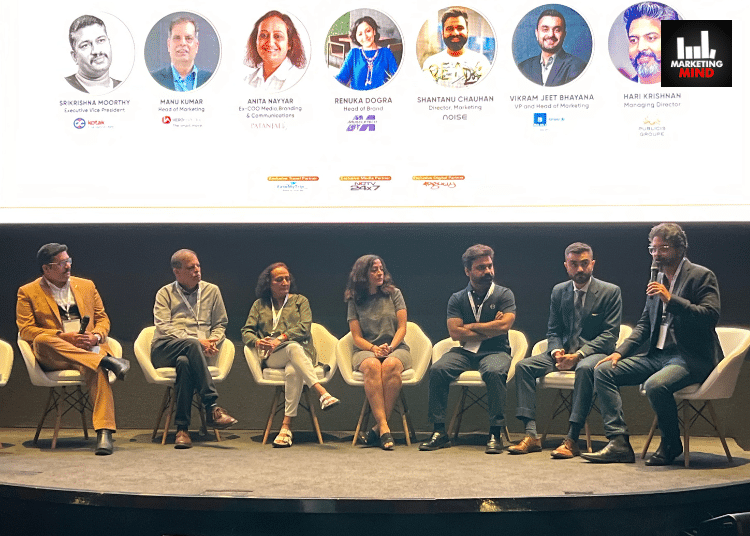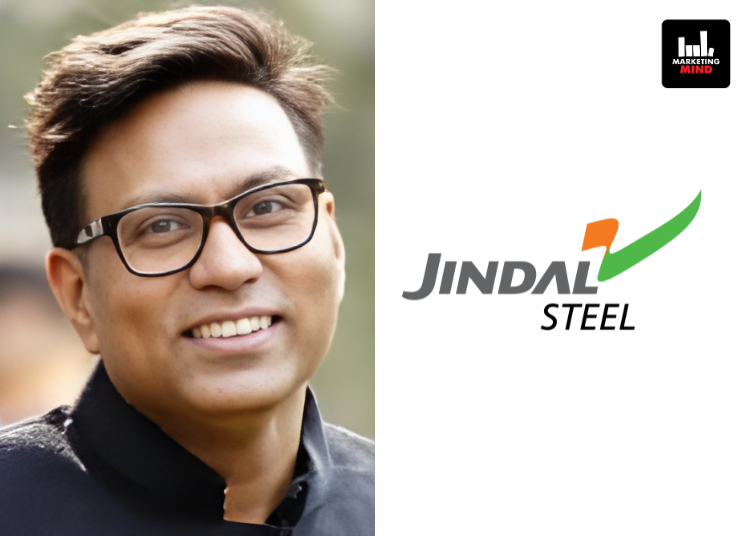In the age of social media, it’s easy to scroll through posts featuring influencers promoting a variety of products, from beauty items to tech gadgets. But while these promotions appear seamless on the surface, behind every successful collaboration is a strategic decision-making process, a balancing act that brands carefully orchestrate.
Today, for brands, the key isn’t just about finding influencers with massive followings, it’s about identifying the right voice that resonates with the specific values and needs of both the product and its audience. From aligning with a brand’s mission to ensuring authenticity in representation, influencer marketing has become an intricate art of trust-building and relevance that shapes the way consumers engage with brands today.
During a panel discussion at the India Influencer Conclave by iCubesWire, industry leaders including, Srikrishna Moorthy, Executive Vice President, Kotak Mahindra Bank; Manu Kumar, Head of Marketing, Hero Electric; Anita Nayyar, Ex-COO, Media, Branding and Communications, Patanjali; Renuka Dogra, Head of Brand, Muscletech; Shantanu Chauhan, Director, Marketing, noise; Vikram Jeet Bhayana, VP and Head of Marketing, Bajaj Allianz and Hari Krishnan, Managing Director, Publicis Groupe, shed light on how they navigate these complexities.
While some industry players expressed the constant challenge brands face, highlighting the uncertainty that surrounds influencer marketing, others elaborated on the importance of testing and learning, sharing insights on how their brands fine-tune their influencer strategy to match the evolving preferences of its audience, focusing heavily on conversational content and engagement.
Krishnan asserted that the influencer marketing space is still quite new, which creates a lot of uncertainty around how people operate, what’s acceptable, and what’s being communicated.
“Essentially, anyone can pick up a camera, say something, put it out there, and it’s treated as truth. This raises significant trust issues. As brand managers, we face the dilemma of wanting to leverage influencer marketing while grappling with concerns, what if something goes wrong? What if the influencer says something inappropriate? Even if the influencer is trusted, what if they get trolled for not fitting the product category? These are the many questions we encounter regularly,” he added.
Meanwhile, Moorthy said, “Over the past year, we’ve made gradual progress in the influencer space, identifying specific types of influencers that align well with our brand. We’ve experimented with influencers across various categories, macro, micro, and beyond, observing trends, particularly during seasonal peaks. This phase has been all about testing and learning, from discovering which languages resonate with our audience to understanding the strategies that truly engage them.”
Additionally, he added, it’s crucial to approach influencer collaborations with caution, especially when there’s uncertainty. Since Kotak Mahindra Bank is dealing directly with consumers, we must exercise extra care. One clear takeaway has been the effectiveness of conversational content in driving engagement.
“Testing and iterating helps us understand which influencers and topics resonate best. We’ve observed various stages of the funnel, top, middle, and bottom, and seen situations where the cost of acquisition (CAC) is remarkably low, driving excellent performance. For instance, a campaign featuring a prominent figure like PT Usha worked well, not just for the engagement it generated, but also because it built trust and relevance,” Moorthy said.
“The key lies in who is delivering the message, ensuring that both trust and relevance align with the audience’s perception. We’ve noticed consumers actively engaging with us, even writing back to express their positive feelings about the campaigns. Sometimes, we target very specific consumer groups and conduct surveys to gauge which brands they are truly satisfied with,” he added.
When asked whether Kotak Mahindra Bank plans to increase its budget for influencer marketing, he explained that it’s a mandate, outlining how they have the potential to increase it.
Nayyar pointed out that we seem to be overlooking the key aspect of the balance between trust and relevance in influencer marketing. The real question is, why are we engaging in influencer marketing today? The answer lies in the need to connect with Gen Z, and if one doesn’t adapt to the changing times, they are going to fall behind. Influencer marketing has become incredibly crucial because, to make an impact, you have to break through the vast amount of content being produced. There’s no escaping that.
“However, the critical point isn’t just about reaching an audience, reach is a baseline, a given. It’s the “what kind of reach” that matters, and more importantly, “who are we reaching?” The focus should be on relevance. Before diving into influencer strategies and campaigns, it’s essential to ask, is the influencer you are choosing relevant? Only then can trust come into play. After all, if the influencer isn’t relevant to your target audience, any trust they bring won’t be of much use. Of course, the level of relevance and trust needed varies by category,” she added.
Nayyar, who previously worked with Patanjali and its Co-Founder Baba Ramdev, shared her experience, stating, “Yes, I worked with one of the biggest influencers in the country, and that influence stemmed from yoga.”
She explained that when Patanjali began exploring influencer marketing, they approached it cautiously. As a homegrown, traditional company, Patanjali took time to adapt to newer trends. However, they did take those first steps.
“Ramdev’s influence in bringing yoga into households across the country was undeniable, making him a powerful influencer in the fields of yoga, naturopathy, and Ayurveda. However, while this influence worked well for those domains, it didn’t necessarily translate to other product categories like toothpaste or personal care items. He has certainly ticked the box for yoga and Ayurveda, but whether that influence extended to other products like? I’m not entirely sure,” she said.
Furthermore she emphasised that while Baba Ramdev has undoubtedly earned the trust of his followers, he has checked the trust box, but perhaps not the relevance box.
Krishan agreed with Nayyar’s statement, adding that relevance takes precedence over trust.
Moving on, Dogra stated, “Influencer marketing gained significant traction during the pandemic, and in the sports nutrition category, we were among the few that continued to perform well. This was largely due to our digital presence and the ability to provide essential nutrition when people needed it most, especially during a time when many other options were unavailable. Using influencers to promote our brand during such critical moments created a tremendous opportunity for growth and wellness, which worked in our favour.”
She highlighted that while COVID-19 may seem like an unconventional example, it was particularly relevant for their category. In the dietary supplement market, trust is a key driver of growth and success, and it takes time to build that trust.
“With influencer marketing, our strategy focuses on long-term collaborations, ensuring authenticity. We provide our products to influencers, allowing them to use them over time, see real results, and then share their experiences genuinely,” Dogra said.
“I believe that establishing long-term partnerships rather than pursuing short-term gains is the key to success in influencer marketing. While we engage many nano-influencers, we prioritise collaborations with nutritionists and doctors, as their credibility is invaluable in this space. Long-term associations yield significant benefits, especially considering that many brands today focus solely on immediate returns, often discarding influencers after brief engagements. This approach is not sustainable,” she added
Furthermore, she went on to say that drawing a parallel to scientific discovery, consistent results over time are essential for validating findings. Musletech has effectively implemented this strategy within the organisation. Moreover, influencer marketing creates a ripple effect across various domains, influencing brand perception and organisational dynamics.
“We have invested in educating our team about this phenomenon. It’s crucial for brands to embrace a multi-dimensional strategy rather than relying on a single influencer marketing channel. Utilising multiple platforms not only enhances visibility but also allows access to a diverse range of creators specific to each medium, maximising outreach and engagement,” Dogra added.
On the other hand, Bhayana, who represents the insurance industry, said that the industry has evolved significantly over the years and this sector has considerable potential for further growth.
“At Bajaj Allianz, we firmly believe in using our own employees as brand ambassadors, and I’ll explain why this approach is vital. Unlike many products, when you purchase insurance, the benefits aren’t immediately visible. Therefore, we realised that if our employees do not become the brand’s face and effectively communicate the value of our products, our efforts may falter.”
“Our leaders are actively engaged on various social media platforms, where we promote cross-selling. Every employee, regardless of their position within the organisation, plays a crucial role in representing the company. It is essential for everyone, from the most junior staff to the highest-ranking executives, to be highly active in communicating with customers and conveying the brand’s message effectively,” he added.
Kumar explained that over the past three to five years, they have focused on educating people about electric vehicles (EVs) and their functionalities. Many individuals lack a clear understanding of EVs, despite the increasing presence of various brands and a gradual shift in public awareness. However, myths still persist. The Company’s ongoing efforts aim to clarify how electric vehicles operate and how they can enhance daily life.
“When it comes to advertising, particularly through influencers, our primary criterion is relevance rather than merely seeking individuals with a specific follower count or reach. We prioritise influencers who possess a genuine understanding of automotive topics, particularly scooters. We intentionally avoid partnering with those who may speak about scooters while predominantly promoting fuel-guzzling diesel SUVs. This sets a clear first-level filter in our selection process,” Kumar said.
“We seek influencers who are knowledgeable about automobiles and who truly believe in the potential of electric vehicles to make a meaningful impact. While follower count is a factor, it does not take precedence over relevance. It is essential that these individuals are comfortable discussing our products and can engage with them authentically,” he added.
Kumar also highlighted that as a sustainable brand, they emphasise the importance of addressing automobile pollution, which contributes significantly to the air quality issues in areas like Delhi-NCR.
“To align with our mission, we partner with ambassadors who genuinely value sustainability. For example, we onboarded Gul Panag as an ambassador for a marathon we launched, she is also a regular user of our electric scooter, making her a credible representative for our brand,” Kumar said.
He added, “Moreover, we recognise that automobile purchasing is influenced by regional factors. Therefore, we consider influencers who not only communicate in English but also resonate with their local communities. They could be micro-influencers with smaller followings but possess significant relevance to their specific regions. Overall, relevance remains at the forefront of our selection criteria.”
Chauhan said that at noise, they have developed a straightforward framework that effectively encompasses all the activities. This framework begins with defining a clear objective: What do you aim to achieve? Is it to create awareness, or is there a need for convergence as requested by the performance team? This clarity helps them select the right influencers.
“Recently, we identified another category we call “impact creators.” These individuals can significantly influence a brand for a short period, making them ideal for events such as sales promotions or festive campaigns. To further refine our approach, we categorise influencers into three segments. I prefer referring to them as content creators, as their work is demanding and time-consuming,” he said.
“We focus on identifying underrated content creators and placing them in the performance category. These creators excel at producing compelling content and are skilled marketers in their own right, effectively managing their influence and personal brand. They possess insights into what works and what doesn’t, allowing us to leverage their expertise in our performance funnel,” he added.
Additionally, people at noise engage creators who are particularly relevant to its category for long-term collaborations. For example, noise has successfully partnered with several tech and fitness influencers, and it’s exploring similar partnerships with lifestyle influencers. The brand’s strategy involves assigning monthly tasks or topics, allowing them to create and integrate content organically.
“One of the key aspects we’ve started to evolve is that we don’t dictate the narrative. Instead, we encourage creators to share their genuine experiences with our brand, such as discussing their daily use of our products. This authenticity resonates with audiences, as they notice details like the clothing, shoes, watches, and headphones the creators wear. These elements contribute to the perception of lifestyle alignment, even if not explicitly mentioned,” he added.
Chauhan underscored that the most critical aspect to address is the post-evaluation process, as it significantly enhances the brand’s strategic refinement. Each month, they create specific content categories for the brand.
“For instance, we have developed three main buckets: unboxing ASMR videos, technical review videos discussing the product’s features, and lifestyle-based videos. Every month, we meticulously analyse our expenditures on influencers, the costs associated with the content, and key performance metrics such as return on ad spend (ROAS) and click-through rates (CTRs),” he said.
“It’s important to note that if a campaign isn’t converting, it may not necessarily indicate a problem with the creator. If there are issues, it might be something we need to address rather than placing blame on the content creator. Through this rigorous post-evaluation process, we’ve identified that initially, we experienced a burn rate of around 50-60%. Out of ten creators, approximately six did not meet our expectations. However, we have since improved our approach, resulting in a success rate where nearly eight out of ten creators now align with our goals. We are currently in a much more favourable position,” he added.
Ultimately, the goal is to foster a connection where creators are not just promoting a brand but are seen as owning it. With long-term influencers, this sense of brand ownership becomes integral to our strategy, Chauhan said.
Moving on, the panellists discussed the choice between celebrities and influencers for brand endorsements, emphasising that this decision varies based on the brand’s category.
Dogra said, “Celebrities do have an impact, but their effectiveness varies by category. In my field, it’s essential to recruit someone who has genuinely consumed the product and demonstrated real results. For example, we recently signed a highly popular lifestyle movie star globally, however, this partnership did not yield the desired outcomes for our brand. We initially thought that, given our focus on bodybuilding, we could leverage the widespread appeal of exercise. Unfortunately, that strategy failed.”
“The following year, we shifted our approach and collaborated with a professional bodybuilder, Boogieman, who is a dedicated user of MuscleTech products. His results speak for themselves. Our category also includes many everyday individuals who compete in events like marathons, showcasing the science of real results.” she added.
Reflecting on her experience of collaborating with influencers for her brand, she pointed out that simply hiring a celebrity does not guarantee success, it must be a well-considered choice.
“Additionally, as a brand, we prioritise understanding the conversions and return on investment from our campaigns, and we have implemented measures to track these metrics. When engaging a celebrity, it’s crucial to consider not just their relevance but also the strategic initiatives the brand undertakes to support their role,” Dogra said.
Similarly, Nayyar also discussed her approach to selecting influencers and celebrities for various products when she was associated with Patanjali.
She explained that today, the landscape of celebrity influence has evolved significantly. Celebrities are now not just recognised figures but also powerful influencers. They operate under diverse revenue models, charging separately for their digital assets and for endorsing products.
“A case in point is Mahakosh, a cooking oil brand by Patanjali, which chose MS Dhoni as its ambassador. The decision to select him stemmed from the need to target the top of the marketing funnel rather than relevance to the product category. While Dhoni may not seem an obvious fit for cooking oil, traditionally associated with women, the campaign creatively showcased him in the kitchen, adding a unique angle to the messaging,” Nayyar said.
She added that it’s important to note that the campaign did not rely on traditional celebrity endorsements from the brand’s promoters, instead, Dhoni’s involvement and digital assets were central to the strategy. The approach aimed to attract attention at the top funnel level, intentionally overlooking the bottom funnel, as cooking oil operates in a distinct market dynamic.
In contrast, for hair oil, which aimed to upgrade consumers from regular to premium options, pricing strategies were critical. The team examined market conditions and regional factors to determine if consumers could support a price increase for a brand perceived as value-for-money, like Patanjali. Ultimately, they opted against employing a celebrity endorsement for this category, instead focusing on micro-influencers. This decision was made due to the specific reach and resonance of the brand within the targeted markets.
In conclusion, she mentioned, “Overall, every marketing strategy must consider the nuances of the top, middle, and bottom funnels, alongside clearly defined objectives and product categories. These factors play a pivotal role in determining the effectiveness of the campaign, ultimately culminating in measurable conversions. Different strategies will yield varied outcomes, highlighting the importance of a tailored approach.”
















